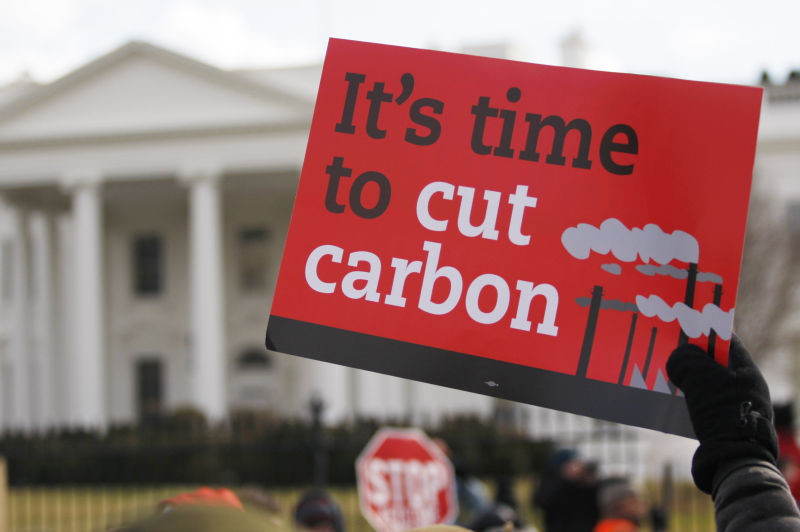A global study unveiled last week has revealed some of the world’s most effective policies for reducing climate change and cutting carbon emissions.
The study, published in Science, involved a team of researchers in Europe, Britain and Canada who assessed 1,500 climate policies implemented in 41 countries on six continents over the past 25 years and identified 63 as the most successful.
The 63 cases, which led to total emission reductions of between 0.6 billion and 1.8 billion metric tonnes of CO2, which stemmed from policy combinations implemented by national governments, the study said.
ALSO SEE: China Slows Coal Power Plant Building Push – Yahoo
It said that while there is a plethora of data on various policies and national standards implemented to help curb emissions, there was a knowledge gap on combinations of policies that are most effective.
“The aim of this large-scale, cross-country assessment is to guide societies and decision-makers in effectively ratcheting up NDCs [Nationally Determined Contributions] under the Paris Agreement by providing tangible evidence on which policy instruments have the potential to achieve large emission reductions,” the study explained.
The researchers started with a database of climate policies in 41 countries overseen by the Organisation for Economic Co-operation and Development, which divided them into four sectors: buildings, electricity, industry and transport.
They used computer algorithms to look for emissions drops of more than 4.5% in those sectors and countries, while accommodating for economic ‘blips’ or distortions such as the Covid-19 pandemic. Then they compared the timing of the drops in emissions to dates of when 1,500 climate policies listed in a database from 1998 and 2022 were implemented.

‘Carrots and sticks’
The study found that mixes of policies that include both incentives to reduce carbon emissions and deterrents to generating emissions were often more effective than single policies, such as incentives, carbon pricing or regulations.
It also found that carbon pricing was more effective in sectors dominated by businesses, such as industry and electricity. But it did not work as well in developing countries.
In the building and transportation sectors, a mix of incentives and deterrents were judged to be best, because individual consumers make decisions about their cars and homes.
The 63 most successful policy combinations were put into an online search faciility which the research team hopes will help policymakers in other parts of the world.
Some examples of effective policy combinations were:
- Canada enjoyed a notable fall in carbon emissions from industry thanks to carbon prices and emissions “cap-and-trade” policies;
- A combination of carbon pricing, subsidies for renewable energy and a coal phase-out plan were key reasons for a big drop in the power emissions in the United Kingdom;
- The US was successful in cutting transport emissions through a mix of tax incentives and subsidies for electric vehicles and tighter standards on carbon emissions.
China’s transition built on ‘green finance’
Meanwhile, China has made enormous progress in the transition to renewable power, as well as cutting emissions, although it is still the world’s biggest emitter of greenhouse gases, as it has about half of the world’s coal power plants.
One of the secrets of China’s ongoing environmental transition was setting up a range of green financing instruments, such as green loans and bonds, plus green insurance products and green equity funds to channel money from capital markets into green projects.
Dr Ma Jun, the founder and president of China’s Institute of Finance and Sustainability, and chair of the Green Finance Committee at the China Society for Finance and Banking, explained to the World Economic Forum that these moves required a clear system to classify green activities and stringent rules on disclosure for the central bank and banking regulator.
Financial incentives were needed to attract investors to the green economy, which were trialled in green finance pilot zones. This work, which led to the country’s dominance in electric vehicles, batteries and renewables, began in 2016.
“China has become the largest green lending market. We have outstanding green loans of more than 30 trillion renminbi [yuan], which is about $4.5 trillion. We also developed the largest green bond market,” Ma Jun said in a WEF video report (see below).
Air pollution in Chinese cities like Beijing had been massively reduced over the past decade, he said. “I think the PM 2.5 values were around 90 on average, and they’re now about 30. That’s some 70% reduction in the air pollution that we’ve realized.”
Much remains to be done, but CO2 emissions are expected to finally decline this year, as noted by monitors such as Carbon Brief.
View this post on Instagram
- Jim Pollard
ALSO SEE:
China Slows Coal Power Plant Building Push – Yahoo
Warning on Tibetan Plateau as World Sees Rise in Heat Records
Big Oil All Talk And No Action on Climate Change, Report Says
Renewables Now Source of 30% of World’s Power – Guardian
Asia is Warming Faster, Hit Hardest by Climate Disasters: WMO
China Imports of Russian Oil Rise to Near-Record Levels
China’s Solar Sector Seen Facing Years of Oversupply, Low Prices
China Wind, Solar Capacity Set to Outstrip Coal For First Time
Oil Producers, Carmakers Knew of Climate Risk in 1954 – Guardian
























